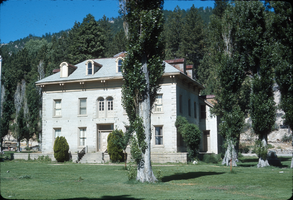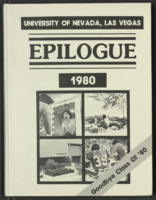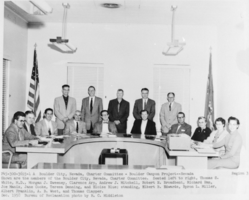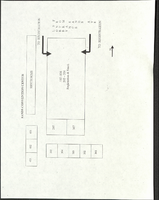Search the Special Collections and Archives Portal
Search Results

Slide of the Bowers Mansion, Washoe Valley, Nevada, circa 1970s
Date
Archival Collection
Description
Image

Epilogue: UNLV Yearbook, 1980
Date
Description
Yearbook main highlights: schools and departments; detailed lists with names and headshots of faculty, administration and students; variety of photos from activities, festivals, campus life, and buildings; campus organizations such as sororities, fraternities and councils; beauty contest winners; college sports and featured athletes; and printed advertisements of local businesses; Institution name: University of Nevada, Las Vegas
Mixed Content
Trula McGee oral history interview
Identifier
Abstract
Oral history interview with Trula McGee conducted by Claytee D. White on March 17, 2021 for African Americans in Las Vegas: a Collaborative Oral History Project.
Trula McGee talks about her experiences growing up in a military family and her time as a student and young adult in the Westside community. She also discusses her employment as a Keno writer and runner at the Sands Hotel and Casino, Castaways Hotel and Casino, and the Silver Slipper Gambling Hall and Saloon and how this led to her meeting both Wayne Newton and Marvin Gaye.
Subjects discussed include: Carver Park; Basic High School; Nevada State Bank; Jackson Ave.; Golden West Shopping Center; Reuben's Supper Club; and Larry's Sight and Sound.
Archival Collection

Yazmin Beltran oral history interview: transcript
Date
Archival Collection
Description
Oral history interview with Yazmin Beltran conducted by Rodrigo Vazquez and Barbara Tabach on February 4, 2019 for the Latinx Voices of Southern Nevada Oral History Project. Beltran discusses her early life in Mexicali, Baja California, Mexico and her childhood and upbringing in Mexico. In 2003, at the age of eighteen, she and her mother joined the rest of her family in Las Vegas, Nevada. After attending College of Southern Nevada and taking English as a Second Language classes, Yazmin began to write as a Spanish contributor for a publication in Reno, and became a writer for Spanish publications in Las Vegas, including El Tiempo, El Mundo, and Univision. Beltran's work for Univision led her to Texas, where she covered events and crises including the 2018 child separation occurring at the United States border, which she discusses in the interview. Finally, Beltran talks about being a journalist for The Nevada Independent and the importance of continuing to report in Spanish.
Text

Maila Aganon oral history interview: transcript
Date
Archival Collection
Description
Oral history interview with Maila Aganon conducted by Kristel Peralta, Cecilia Winchell, and Stefani Evans on June 10, 2021 for Reflections: The Las Vegas Asian American and Pacific Islander Oral History Project. Maila Aganon discusses her childhood, family upbringing, and immigration to the United States from the Philippines when she was a college student. She shares how her parents moved to Las Vegas first and Maila followed a decade later, investing in real estate and eventually taking up permanent residence. Maila talks about her employment history with Allstate Insurance, Bank of America, AAA, Caesars Entertainment, and finally Aon as a Senior Vice President. She also shares her thoughts on the growth of Las Vegas and the growth of the Asian community and cultural influence within the city. Subjects discussed include: anti-Asian violence; Filipino grocery stores; Filipino foods; remote work.
Text

Film transparency of the Boulder City, Nevada Charter Committee, December 1958
Date
Archival Collection
Description
Image

Photograph of the Las Vegas Kiwanis Club members, Las Vegas, February, 1943
Date
Archival Collection
Description
Image



